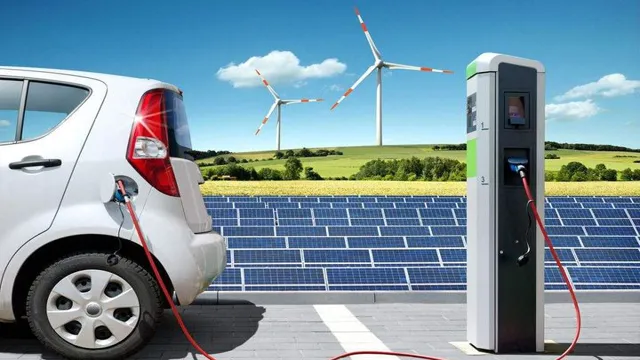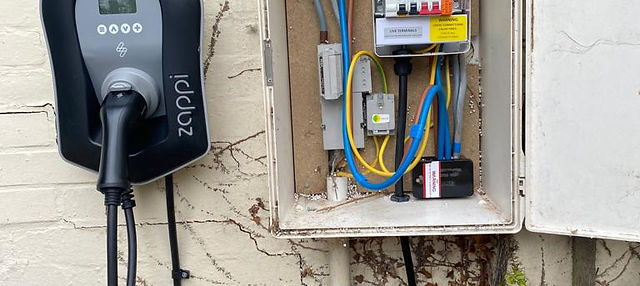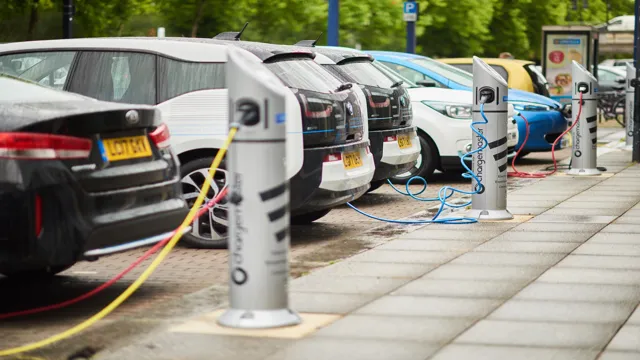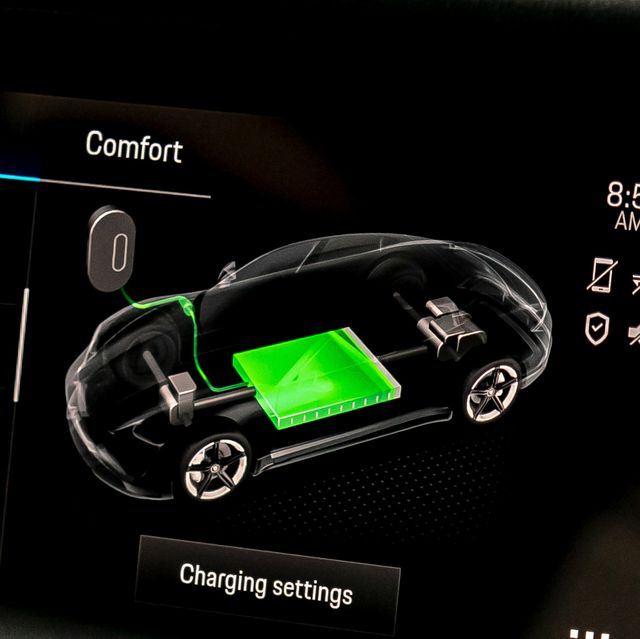Juicing Up: The Latest Electric Car Charging Infrastructure Developments
As the world is slowly transitioning towards a cleaner and more sustainable future, the need for electric vehicles is becoming increasingly apparent. With more and more people opting for these cars, the need for an efficient electric car charging infrastructure has never been more urgent. Governments and businesses alike have been investing heavily in building out charging stations and networks in order to support this growth.
In this blog post, we will take a closer look at the latest updates in the world of electric car charging infrastructure, and what this means for the future of sustainable transportation. So buckle up, and let’s dive in!
Current State of Electric Car Charging Infrastructure
The electric car charging infrastructure has been evolving rapidly in recent years as more and more people shift towards electric vehicles. There are now over 100,000 public charging stations across the US, making it easier for EV drivers to travel longer distances without worrying about running out of charge. The charging speeds have also been improving, with some of the latest charging technology capable of delivering 350 kW of power, providing a full charge in as little as 20 minutes in ideal conditions.
However, there are still limitations to the infrastructure, such as charging availability in rural areas or apartment complexes without access to charging stations. Additionally, the need for greater cooperation between automakers and charging station providers is necessary to ensure that more standardized charging solutions are available to EV users. As EV technology continues to improve and become more mainstream, it’s essential that the infrastructure continues to keep up with the pace of change.
So while there have certainly been significant strides in electric car charging infrastructure, there is still a long way to go before it becomes as accessible and convenient as traditional gas stations.
Number of Charging Stations
As electric cars become more mainstream, the demand for charging stations has grown exponentially. Currently, the state of electric car charging infrastructure is still catching up to this demand. In most cities, there are still not enough charging stations available to meet the needs of electric car owners.
However, this is slowly changing, as more and more businesses and governments are investing in electric car charging infrastructure. This is great news for the future of electric cars because the more charging stations that are available, the easier it will be for people to switch to electric vehicles. The keyword used organically is “electric car charging infrastructure”.

Type of Chargers Available
When it comes to charging an electric car, there are several types of chargers available, each with their own benefits and drawbacks. The most common type is a Level 2 charger, which can typically charge a vehicle in 4-6 hours. These chargers can be installed in a residential or commercial setting and are great for daily charging needs.
Fast chargers, or DC fast chargers, can provide an 80% charge in just 30 minutes, making them ideal for longer trips. However, these chargers are currently less widespread and may not be as accessible as Level 2 chargers. The current state of electric car charging infrastructure is a rapidly evolving landscape, with more charging stations being added regularly.
However, in some areas, there may still be a lack of charging stations, which can hinder the adoption of electric vehicles in those areas. Nonetheless, many companies and governments are working to create a more robust charging infrastructure, which is essential for the widespread adoption of electric cars.
Location of Charging Stations
The current state of electric car charging infrastructure varies from region to region, but overall, there has been significant progress in recent years. Charging stations can now be found in many urban areas, along highways, and even in some rural communities. However, there are still some gaps in the charging network, causing concern for electric vehicle (EV) owners who need to travel long distances.
The availability of charging stations also depends on the type of charger needed. While most EVs can use a standard Level 2 charger found at many public charging stations, fast chargers are rarer and typically only found along major highways or in larger cities. Furthermore, some charging stations are operated by private companies, while others are owned and operated by electric utilities or governments.
Overall, the location of charging stations is a critical factor in the adoption of EVs, and efforts are underway to improve and expand the charging network to meet the growing demand.
Future Plans for Electric Car Charging Infrastructure
If you’re considering buying an electric car, you might be wondering about the availability of charging stations in your area. The good news is that many countries around the world are investing in expanding their electric car charging infrastructure. For example, in the UK, the government has set a target to have at least 500,000 charging points by 2030.
This update in electric car charging infrastructure will make owning an electric vehicle more accessible and convenient for drivers. As the popularity of electric cars continues to increase, it’s necessary for charging infrastructure to keep pace with the demand to avoid long queues and increased wait times. This means that the electric car charging infrastructure will continue to evolve and expand, making it easier for people to switch to electric vehicles.
Government Initiatives
The government has taken up several initiatives to promote the adoption of electric cars. One of the significant steps is the development of electric charging infrastructure across the country. With more electric cars hitting the roads, the government has planned to set up a network of charging stations in different locations.
These charging stations will be installed on highways, city streets, and public parking areas, making it convenient for EV owners to recharge their vehicles. The government has already started to set up several charging stations across the country. It aims to install around
5 lakh charging stations by the end of 202 This step by the government is a crucial move towards making electric cars more accessible and affordable for the masses. With the increase in charging stations, people will be encouraged to embrace electric vehicles, leading to a significant reduction in carbon emissions.
With the uptake in EVs, we can usher in a clean and sustainable future, making the world a better place for the future generations to come.
Private Sector Investments
As the world continues to shift towards renewable energy, it’s no surprise that the private sector is investing in the future of electric car charging infrastructure. Companies like Tesla and ChargePoint have been leading the charge, providing fast and reliable charging stations that are easy to access for consumers. The future of electric car charging is promising, with plans for more investment and expansion expected in the coming years.
Imagine a world where you can cruise down the highway without worrying about running out of charge. It’s beginning to seem like a reality thanks to the private sector’s commitment to electric car charging infrastructure. The keyword “electric car charging infrastructure” is crucial to this industry’s development and will only gain more relevance as we continue to transition to cleaner forms of transportation.
New Technologies and Innovations
As electric cars become increasingly popular, there is a growing need for a charging infrastructure to support them. Fortunately, there are numerous initiatives being taken to improve and expand on existing charging networks. For instance, some companies are testing wireless charging pads that drivers can park on and charge their cars without plugging in.
Other innovations include solar-powered charging stations that can be installed in remote areas, making it easier to charge vehicles away from densely populated areas. Additionally, new battery technologies are being developed that enable electric vehicles to be charged faster and have a longer range. With all these new technologies and advancements, the future of electric car charging infrastructure looks bright.
As long as the industry continues to innovate and invest in convenient and sustainable solutions, the adoption of electric vehicles will inevitably continue to grow.
Impact of Electric Car Charging Infrastructure on Environment and Economy
Electric car charging infrastructure update is an important element in increasing the adoption of electric vehicles. With the increasing adoption of electric vehicles, public charging infrastructure is seen as one of the most pressing needs. Many countries have set targets to increase the number of public charging points.
By creating a comprehensive charging infrastructure, it will be possible to provide adequate support to adopters who worry about the range limitations of electric vehicles. Furthermore, creating electric car charging infrastructure will have a significant impact on the environment by reducing carbon emissions and promoting clean energy. Additionally, the creation of a robust charging infrastructure will be beneficial to the economy, promoting the production of electric vehicles and supporting related industries such as battery manufacturing and renewable energy.
Finally, the growth of the charging infrastructure will encourage the development of innovative technologies to improve charging speed and reduce the cost of charging.
Reducing Carbon Footprint
Electric Car Charging Infrastructure Switching to electric cars can have a significant impact on reducing carbon footprint and greenhouse gas emissions. However, for electric cars to become a mainstream mode of transportation, an extensive and efficient charging infrastructure is required. The installation of a robust charging network can not only reduce range anxiety amongst electric car drivers but can also have a positive impact on the environment and the economy.
The implementation of electric charging infrastructure is a critical factor in the reduction of carbon emissions, as it reduces dependency on fossil fuels. In addition, the incorporation of such infrastructure has a positive impact on local economies by creating local jobs for technicians and builders required to construct and maintain charging stations. The charging stations themselves can generate revenue for local businesses and can encourage new commerce in areas where such stations are installed.
Installing electric car charging infrastructure is an important step in our transition to a more sustainable future.
Job Creation and Economic Growth
Electric car charging infrastructure has a significant impact on both the environment and the economy. The availability of charging stations will encourage more drivers to switch to electric cars, which will reduce harmful emissions and improve air quality. Investing in charging infrastructure will also create new jobs and promote economic growth in the communities where these stations are located.
Studies have shown that the construction and operation of electric charging stations generate higher revenue and job creation than traditional fuel stations. The growth of electric vehicles will also lead to increased demand for renewable energy sources and the production of batteries and other components needed to build these cars. Furthermore, the increased use of electric cars will decrease the dependency on foreign oil imports, thereby improving energy security and reducing the trade deficit.
Investing in electric charging stations will undoubtedly lead to significant improvements in environmental and economic sustainability.
Conclusion: The Bright Future of Electric Car Charging Infrastructure
In conclusion, the electric car charging infrastructure is experiencing a jolt of excitement as it continues to expand and improve. This update signals a brighter future for electric vehicles as more charging stations are added and innovative technologies are employed to make charging faster and more convenient. The electric car revolution is here to stay, and with the ongoing efforts to improve charging infrastructure, we can look forward to a cleaner, greener, and more electrically charged world.
“
FAQs
What is electric car charging infrastructure?
Electric car charging infrastructure refers to the network of charging stations that an electric vehicle owner can use to recharge their car’s battery.
How has the electric car charging infrastructure evolved over time?
The electric car charging infrastructure has evolved from simple charging stations to sophisticated networks with hundreds of charging stations that can be located and reserved using a smartphone app.
What is the current status of electric car charging infrastructure worldwide?
There is significant variation in the availability of electric car charging infrastructure around the world, with some countries having a comprehensive network of charging stations and others having only a few.
How is the electric car industry working to improve charging infrastructure?
The electric car industry is working to improve charging infrastructure by investing in research and development of faster and more efficient chargers, collaborating with governments and private companies to build more charging stations, and providing incentives for consumers to buy electric cars.






